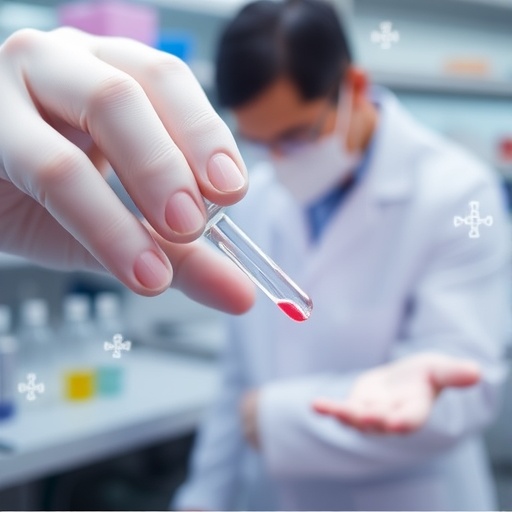A groundbreaking advancement in synthetic organic chemistry has emerged from the laboratories of Chiba University, Japan, where researchers have unveiled a novel method for the selective alkylation of indoles at the elusive C5 position. This development addresses a longstanding challenge in medicinal chemistry, offering unprecedented precision and efficiency in modifying indole compounds—structures integral to a multitude of biologically active molecules and pharmaceutical agents.
Indoles, characterized by a fused architecture of a benzene ring and a nitrogen-containing five-membered ring, serve as a foundational scaffold in many natural products and drugs. Their chemical versatility stems from the ability to selectively functionalize different ring positions, unlocking diverse synthetic pathways to tailor biologically relevant molecules. Among these positions, the C5 carbon has remained notably difficult to modify due to its inherent low reactivity and steric environment, limiting chemists’ capacity to explore a full range of chemical modifications there.
The research team, led by Associate Professor Shingo Harada, leveraged the unique reactivity of carbenes—highly reactive species featuring divalent carbon atoms—to accomplish a direct, regioselective C5–H alkylation of indoles. Transition metal catalysis, particularly involving copper in concert with silver salts, proved critical to enhancing activity and selectivity, maneuvering the reaction pathway to favor C5 functionalization. This method sidesteps the need for expensive rhodium catalysts used in prior approaches, making it not only more economically feasible but also more scalable for pharmaceutical synthesis.
The essence of this technique lies in the deployment of α-diazomalonates as carbene precursors in the presence of a mixed copper-silver catalyst system. Using N-benzyl indole derivatives equipped with electrophilic substituents such as enones or benzoyl groups at the 3-position, the reaction delivers alkylated products at C5 with high selectivity and impressive yields reaching up to 91%. Adjustment of reaction parameters—solvent concentration, catalyst loading, and substrate design—further optimized these outcomes, highlighting the robustness and broad substrate scope of the method.
Delving into the reaction mechanism through quantum chemical modeling, the researchers revealed a fascinating two-step process. Initially, the carbene species attaches transiently at the adjacent C4 position, forming a high-energy, strained three-membered ring intermediate. This intermediate subsequently undergoes a facile rearrangement, effectively migrating the new carbon–carbon bond to the coveted C5 position. The copper catalyst stabilizes both the initial intermediate and transition state, drastically lowering the activation energy barrier and enabling the otherwise unlikely rearrangement to proceed efficiently.
This intricate understanding of the mechanistic underpinnings not only validates the empirical approach but also paves the way for future innovations in transition-metal catalyzed C–H functionalization chemistry. The ability to selectively target the C5 position unlocks new synthetic routes to indole derivatives that closely resemble bioactive natural products and pharmaceutical candidates, thus expanding chemists’ ability to craft molecules with desired biological activities.
Indoles occupy a central role in drug development, evident from the approval of multiple indole-based therapeutics by the U.S. Food and Drug Administration over recent years. Applications span migraine treatment, antimicrobial therapy, and cardiovascular disease management, underlining their pharmacological significance. However, accessing selectively modified indole derivatives remains a bottleneck. The copper-catalyzed C5 alkylation addresses this bottleneck by offering a straightforward, reliable, and cost-effective strategy to generate highly functionalized indole frameworks.
The scalability of this copper catalyst system is particularly notable. By replacing expensive and rare rhodium catalysts with more abundant copper salts, the method advances sustainable chemistry principles while maintaining exceptional regioselectivity and yield. This transition is vital for the pharmaceutical industry to meet increasing demands for efficient and green synthetic methodologies that can be practically implemented in large-scale drug manufacturing.
Moreover, the method exhibits remarkable tolerance to diverse substituents on the indole ring. Substituted benzyl, methoxybenzyl, allyl, and phenyl groups are all compatible, thus affording access to a wide array of structurally varied indole derivatives. Such versatility is instrumental in medicinal chemistry, where subtle changes in molecular structure can radically affect biological activity and pharmacokinetics.
According to Dr. Harada, this breakthrough enhances the toolbox for chemists seeking to exploit indole scaffolds, noting that while the impact may not be seismic overnight, the steady accumulation of such advances fosters incremental progress vital for drug discovery. The team is actively pursuing further metal-carbene reaction systems to refine selectivity and efficiency, aspiring to develop synthetic strategies that could contribute to novel treatments for challenging diseases.
This research exemplifies the power of integrating mechanistic insights with innovative catalysis to overcome chemical challenges and streamline the synthesis of complex molecules. The combination of experimental optimization and theoretical modeling not only provides clarity on reaction pathways but also offers strategic avenues for developing analogous transformations in related heterocyclic systems.
In conclusion, the copper-catalyzed direct C5–H alkylation of indoles marks a significant step forward in the selective modification of these pharmacologically important molecules. By marrying economic catalyst choice with a deep understanding of reaction dynamics, this method equips medicinal chemists with a potent new strategy to generate diverse indole derivatives poised for therapeutic exploration. The promise of this approach—efficient, selective, and practical—heralds exciting possibilities in the synthesis of next-generation drugs.
Subject of Research:
Not applicable
Article Title:
Copper-catalyzed direct regioselective C5–H alkylation reactions of functionalized indoles with α-diazomalonates
News Publication Date:
15-Jul-2025
Web References:
https://doi.org/10.1039/D5SC03417E
References:
Harada S, Isono T, Yanagawa M, Nemoto T. Copper-catalyzed direct regioselective C5–H alkylation reactions of functionalized indoles with α-diazomalonates. Chemical Science. 2025 Jul 15.
Image Credits:
OLCF via Creative Commons Search Repository
Keywords
Indole chemistry, C5 functionalization, copper catalysis, carbene reactions, regioselective alkylation, α-diazomalonates, medicinal chemistry, synthetic methodology, drug discovery, transition metal catalysis, quantum chemical calculations, heterocyclic synthesis




